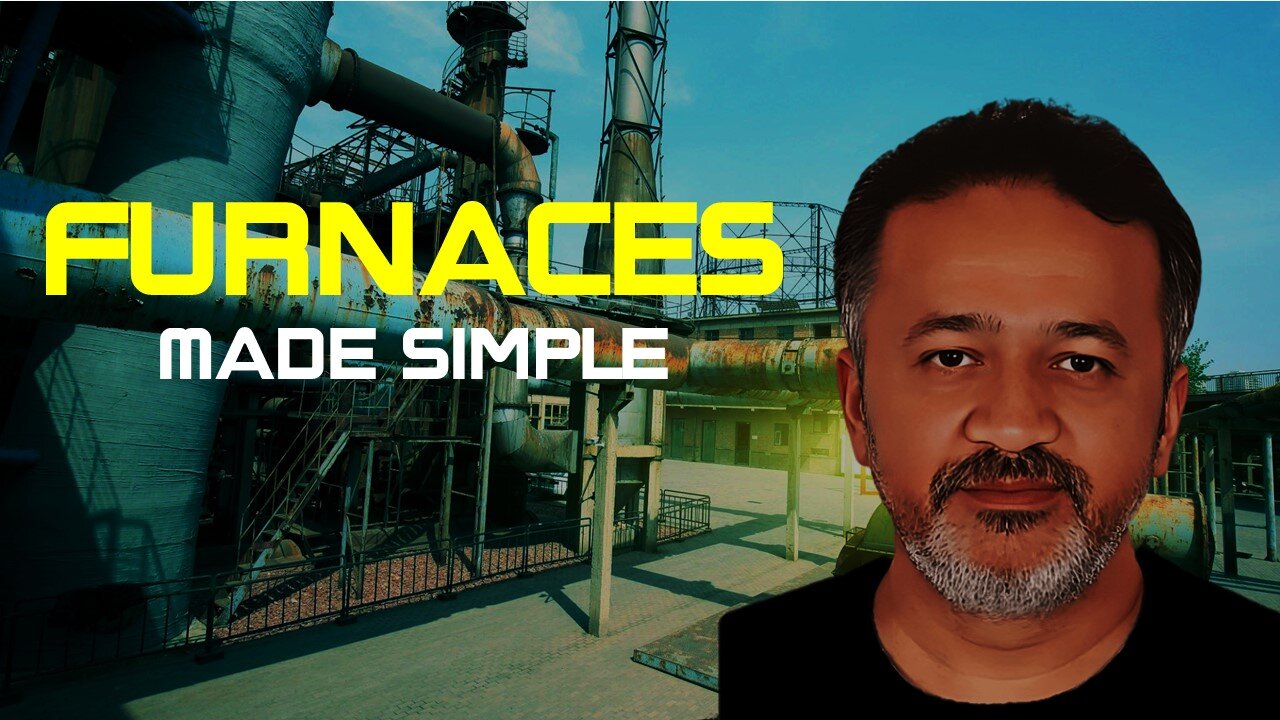Premium Only Content

Furnaces Demystified |Ultimate Guide to Furnaces: Types, Operation, and Maintenance
Furnaces are heating devices used to generate and distribute heat in residential, commercial, and industrial settings. They are designed to create and control high temperatures for a variety of applications, including space heating, water heating, metal smelting, glass production, and industrial processes.
Furnaces typically consist of a heat source, a combustion chamber, and a heat exchanger. The heat source can be a fuel, such as natural gas, propane, oil, or coal, or it can be an electric heating element. The fuel is burned or the electric element is energized in the combustion chamber, where the heat is generated.
The heat exchanger is a critical component that transfers the heat from the combustion chamber to the surrounding air or fluid. It is designed to efficiently absorb and transfer the heat while keeping the combustion byproducts separate from the circulated air or fluid. In residential and commercial furnaces, the heat exchanger is usually a series of metal tubes or coils through which air or water flows to be heated. In industrial furnaces, heat exchangers can be more complex, designed for specific processes and materials.
Furnaces are classified into different types based on their fuel source and heat transfer methods:
Gas Furnaces: Gas furnaces burn natural gas or propane as fuel and use a heat exchanger to transfer heat to the air circulated throughout the building. They are commonly used for space heating in residential and commercial buildings due to their efficiency and convenience.
Oil Furnaces: Oil furnaces use heating oil as fuel and operate similarly to gas furnaces. They are more common in regions where natural gas is not readily available. Oil furnaces require a storage tank for the oil and a delivery system to supply the fuel to the combustion chamber.
Electric Furnaces: Electric furnaces use electric heating elements to generate heat. They are typically used in areas where other fuel sources are limited or electricity is more affordable. Electric furnaces are commonly found in residential homes, apartments, and smaller commercial spaces.
Industrial Furnaces: Industrial furnaces are designed for specific applications and can operate with various fuel sources, including coal, natural gas, oil, or electricity. They are used in processes such as metal smelting, glass production, chemical reactions, and heat treatment of materials.
Furnaces require regular maintenance, including cleaning, filter replacement, and inspection, to ensure efficient operation and safe combustion. Modern furnaces often include advanced control systems, programmable thermostats, and safety features to optimize energy efficiency and enhance user comfort.
In summary, furnaces are heating devices that generate and distribute heat for a wide range of applications. They are essential for providing warmth, heating water, and enabling various industrial processes that rely on high temperatures. By efficiently converting fuel or electrical energy into heat, furnaces play a vital role in keeping homes, buildings, and industries comfortable and productive.
-
 LIVE
LIVE
Wendy Bell Radio
5 hours agoGrasping At Straws
9,613 watching -
 LIVE
LIVE
Randi Hipper
40 minutes agoLOCAL BITCOIN BOTTOM IS IN? Technical Analysis with Cassius Cuvee
76 watching -
 45:02
45:02
The Finance Hub
8 hours ago $0.07 earnedI CAN'T BELIEVE WHAT JUST HAPPENED TO HILLARY CLINTON!
1292 -
 1:36:33
1:36:33
Chicks On The Right
4 hours agoOzzy gone, Portnoy vs Schultz, more on Colbert show ending, and Candace's likely new guest
8.73K1 -
 LIVE
LIVE
LFA TV
12 hours agoLFA TV ALL DAY STREAM - WEDNESDAY 7/23/25
4,431 watching -
 1:18:00
1:18:00
Game On!
17 hours ago $2.05 earnedJayden Daniels Can Do What Only 8 Other NFL QBs Have Done Before!
16.6K2 -
 4:01:00
4:01:00
The Bubba Army
1 day agoTrump accuses Obama of TREASON! - Bubba the Love Sponge® Show | 7/23/25
39.7K9 -
 28:26
28:26
Producer Michael
22 hours agoIS THIS MY MOST CRAZY PURCHASE YET?!
18.4K4 -
 23:21
23:21
marcushouse
9 hours ago $1.97 earnedStarship Flight When!? Yea, a LOT Just Happened!
20K1 -
 23:48
23:48
Jasmin Laine
18 hours ago“We Reject Demographic Change”—Carney’s Comment BLOWS UP as Poilievre Drops the Hammer
19K24